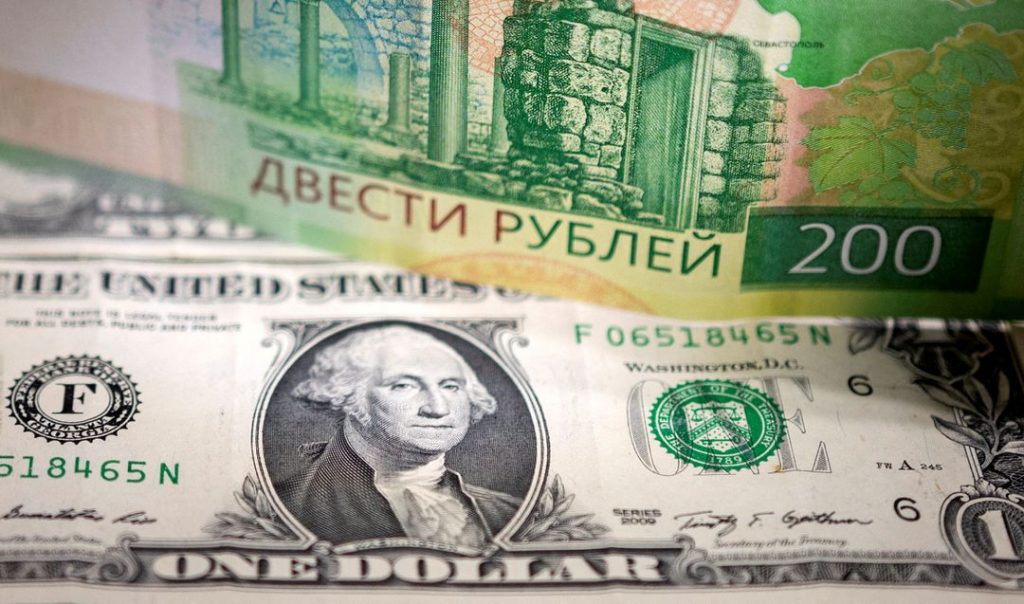As all eyes are riveted on the geopolitical and humanitarian impact of the ongoing Russia-Ukraine war, the real war that is being waged is over challenging the supremacy of the US dollar by the Russian ruble or other alternative currencies. In fact, according to one explanation, the conflict between Russia and Ukraine and the subsequent US-led sanctions against Russia are intended to reduce Europe’s dependence on Russian crude and gas and thereby erode the strength of the ruble in the international currency market. America’s worry increased due to Russia’s collaboration with Germany for supply of gas to the EU countries through the Nord Stream II gas project. Once it is commissioned, Europe will be further dependent on Russian gas supply. The war has put the project, which was going on in full swing, on the back burner. Germany has suspended it responding to the US’ clamour for sanctions.
The progress of the Russia-Ukraine war and the flurry of international actions increasingly bring to the fore the challenge being offered to the dollar hegemony. India and Russia are trying to establish rupee-ruble trade settlement and this topped the agenda during last week’s visit of the Russian Foreign Minister Sergey Lavrov to India and his parleys with External Affairs Minister S Jaishankar and Prime Minister Narendra Modi. Similarly, China and Saudi Arabia are exploring trade settlement opportunities in their respective currencies. If such trade settlement negotiations materialise, it would change the face of global trade where the US dollar and euro dominate presently. According to a report from 1999-2019, the dollar accounted for 96 per cent of trade invoicing in the Americas and 79 per cent in the rest of the world. About 60 per cent of the international and foreign currency liabilities and claims are denominated in US$. This share has remained relatively stable since 2000 and far exceeds that of the euro, which is at 20 per cent.
A recent State Bank of India report says that now is a golden opportunity for internationalisation of the Indian currency (rupee) as countries are proposing trade in their fiat currencies to by-pass the economic sanctions imposed by the Western world. Probably the government’s decision to demonetize the INR sullied the currency’s image. Internationalisation of a currency implies that the currency can be freely transacted by both residents and non-residents of the country and be used as a reserve currency for global trade. The INR suffers in those aspects.
In the wake of the severance of Russian financial institutions from the SWIFT system and the freezing of Moscow’s dollar reserves by the US and its allies, the bitter conflict in the international finance system between Russia and the West has assumed serious proportions. As a result, different nations may now be more eager to diversify their foreign exchange reserves so that their financial security may not depend on their relationship with Washington alone. However, the global trust earned by the US$ over the decades, cannot be wished away.
Productive economies of the world deplete their resources and exhaust their manpower to boost their exports. This is done to increase the earning of forex so that the productive countries may invest their forex surplus in the so-called ‘real economy’. This strategy has been more prevalent since the Asian Financial Crisis of 1997. The US is the largest beneficiary of investments from export earnings of developing countries. This is because it is the dominant currency for global trade.
China, according to one estimate, has $3.2 trillion of forex against Saudi Arabia’s $447 billion and India’s $632 billion. These are some of the countries with the largest dollar forex. China and Russia are alive to the threat of exchanging their produce for the dollar, whose value and access is controlled by the US. To obviate this, they have created alternatives to the SWIFT. After the Russia-Ukraine war, more countries may find merit in this strategy that offers the opportunity to use their own currencies for trade and faster adoption of alternatives to SWIFT. At the moment, two banks of Russia have been brought under the sanction of denying SWIFT facilities which has started impacting the economy of many countries.
It is in this context the remarks made by Jaishankar before the British foreign secretary Liz Truss need to be examined. His charge that European countries continue to buy crude and gas from Russia despite the sanctions is borne out by facts. In fact, in March Europe had bought 15 per cent more oil and gas from Russia than it did the month before. Most of the major buyers of oil and gas from Russia are in Europe. India gets the bulk of its energy supplies from the Middle East. Russia’s contribution is less than 1 per cent.
Truss also admitted Britain’s dependence on Russia, claiming in the same breath that her country is trying to reduce it. India’s willingness to buy Russian crude at a discount taking advantage of the sanctions is only natural. But, it is also time for India to take stock of its financial systems and plan to safeguard its financial sovereignty since the control of global finance in the hands of either the US or China will never augur well for it.
